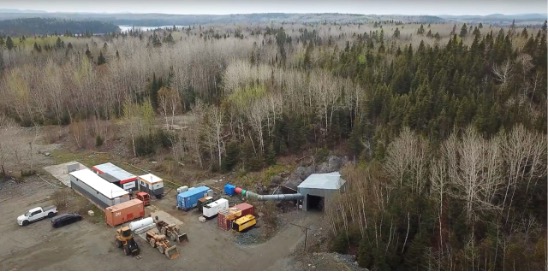Labyrinth Resources (ASX:LRL) has received announce outstanding metallurgical results from its comprehensive testwork which demonstrate a clear, efficient processing pathway for its 500,000oz Labyrinth gold project in Quebec, Canada.
The results will help underpin optimisation studies across the Labyrinth Project, initial plant design costings and assessment of any third-party ore sales, toll treatment or concentrate sales.
“These are excellent metallurgical results demonstrating that we can deliver 95.2 per cent gold recoveries using a conventional gravity and flotation circuit,” Chief Executive Matt Nixon said.
“This will be extremely beneficial for our optimisation studies, which are already underpinned by a Resource grade of 5g/t and access to the existing underground mine infrastructure”.
Details of Testwork
The project commenced in August 2022 with the submission of diamond core crushed residue composites to Base Metallurgical Laboratories Ltd British Columbia, Canada. The metallurgical programme was derived and managed by JT Metallurgical Services in Perth, Australia.
BaseLabs were presented with a total of 35 diamond hole crushed residue composites totalling 17.55m @ 6.32g/t Au. These composites originated from a total of five diamond holes representing at least 80% of the known gold mineralisation of the Labyrinth project aiming to reflect the 7g/t Au resource feed grade. Five sub-composites were generated initially for assay prior to producing a single Master Composite which returned 5.60g/t Au and 1.7g/t Ag via BLEG assay.
Feed Grades and Mineralogy
Key analytes of the five sub-composites and one Master composite indicated very low levels of common deleterious elements. Initial BLEG testwork on the Master Composite returned a cyanide recovery of 97.1% Au and 99.7% Ag suggesting the ore is free milling.
Trace Mineral Search (TMS) on the Master Composite post Heavy Liquid Separation (HLS) identified 33.7% of the gold being liberated with 52.7% associated with pyrite and 10.2% as multiphase (two or more minerals). 98.6% of the liberated gold by occurrence was less than 38 microns in size. Encouragingly, only 0.5% of the gold was associated with non-sulphide gangue, 100% of the observed gold was present as native gold and targeted pyrite particles were generally well liberated.
Summary and Next Steps
The Labyrinth gold mineralisation is highly amenable to flotation owing to the strong affiliation of gold with pyrite and the absence of common deleterious elements leading to a high gold grade, dominant pyrite concentrate.
Mineralogical studies identified free gold as being ultrafine leading to the low gravity recovery hence an option exists to remove the gravity circuit thus producing an even higher value concentrate if sale terms are favourable.
This study illustrated the benefit of a finer grind size hence the implementation of an UFG mill on the float concentrate stream will be required prior to cyanidation. Opportunities to further improve flotation and dissolution kinetics and to reduce capital and operating cost will be the focus of future studies including the application of the baseline conditions identified in this programme to variability diamond core samples.
Labyrinth is in a strong position based on these stand-out metallurgical results to conduct a preliminary economic study on the following three options:
1. Installation of a Gravity/Float/UFG Leach circuit
2. Installation of a Gravity/Float circuit for offsite sale/treatment of float concentrate
3. Whole of Ore Toll Treatment or Ore Sales through discussions with nearby facilities
Near term production hence early cash-flow via toll treatment or ore purchase is possible with fifteen gold mills located within a 200km haulage distance from Labyrinth (Table 7). Of those, three have flotation circuits with the remaining being gravity/cyanidation, the closest being Kirkland Lake’s Macassa Mill which operates a P80 40-45μm leach feed grind size ensuring improved recoveries.
For further information please visit: https://labyrinthresources.com/












